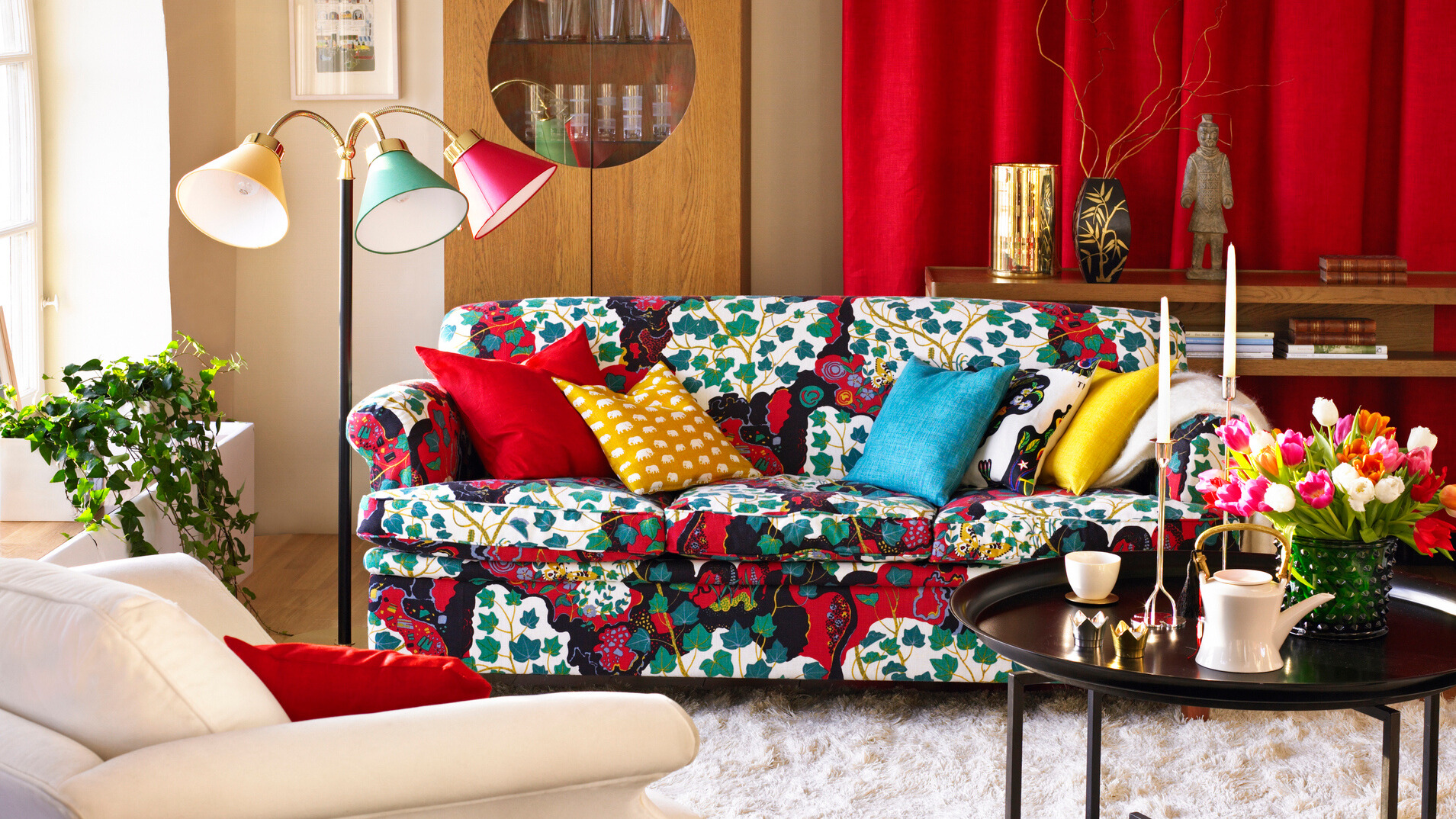
You may have heard of ‘dopamine decor’ — the latests popular home design trend, focused on bold colors, patterns and joyful vibes that can lift your mood. But when it comes to the bedroom — where a calm environment is crucial for rest — can this high-energy trend really hold up? The key is to strike a balance and ensure that you don’t sacrifice your sleep for style.
To get a better understanding, we spoke to interior design experts who have shared their insights on the concept and how you can integrate it into your bedroom for restful sleep. Here’s everything you need to know.
What is dopamine decor?
Inspired by the TikTok fashion trend ‘dopamine dressing’— which celebrates the concept of wearing what makes you feel good, dopamine decor leans into bold colors, patterns and adorning your home with meaningful or personal touches, rather than muted tones or minimalist designs.
If you’re thinking this is just a fun home-makeover, there’s more to it, with researchers in one study noting that “visual elements such as lighting, color, and spatial form influence the emotional tone of a space by shaping mood and setting expectations,” and even pointing to another study where participants exhibited more excitement when looking at red slides (a warm color) than green slides (a cool color).
“Dopamine decor trend is about intentionally adding joyful, sensory rich elements as well as bright and saturated colors,” says Jo Rich, interior designer at Raydoor Sliding Walls & Doors.
As the name suggests, the idea is for you to get a ‘dopamine hit’ from your home environment, which can directly impact your mood and energy levels. “It involves playful patterns, bold art, and tactile textiles designed to trigger small bursts of pleasure and lift your mood overall,” adds Rich.
How to integrate dopamine decor in your bedroom
1. Adding splashes of color
“The pops of color and pattern are designed to boost energy and happiness, not necessarily improve sleep. It’s actually common for highly stimulating environments to make it harder for people to wind down,” says Rich.
A good workaround is to incorporate color to your bedroom in small doses. Instead of painting your whole bedroom a bold color, go for an accent wall — with a contrasting color, pattern or texture.
You can also focus on adding colorful elements like throw pillows, blankets and artwork which might be nostalgic for you personally, or indicative of a particular season. Check out our tips on how to dress your bed for fall, for example.
2. Stick to cool-toned bedding
According to fabric experts and interior designers, it’s wise to stick to lighter colors when choosing sheets and bedding to go with your bedroom decor.
Here’s a simple bedding rule suggested by Suze Dowling, linen expert and co-founder of Pattern Brands, the parent company of the bedding brand Miracle Made:
“If the color visually fades when you dim the lights, it’s doing its job. High-contrast patterns and loud, saturated brights keep your eyes busy and your brain alert, which is the last thing you want before bed.”
White (a hotel-bedding staple), beige, soft greens and blues, taupes, muted blush and lavender are some of her top picks.
3. Experiment with lighting and personal items
In addition to colors and bedding, the lighting in your room can also significantly affect your sleep quality. When considering dopamine decor for your sleep space, experts recommend warm-toned lights which create a cozy, calm ambience, signalling rest and reset.
You can also go for a ‘day to night’ shift in decor in your bedroom. This means reserving some colorful personal items for the day which can potentially work well for your overall mood and removing or replacing them as part of your nighttime routine to help you wind down in time for bed.
“Dopamine decor can very much sabotage sleep if overused. Use dimmable, warm lighting for evenings, and make the colorful pieces removable so the room can shift from energizing by day to restful at night,” says Rich.
Top tips to create a conducive sleep environment
Set the right temperature
Our normal core body temperature is generally 37°C (98°F), and it drops by 0.5-1°C (1-2 °F) during the night, which promotes melatonin (the sleepy hormone) production.
Cranking up the heating or lowering it much beyond this range can significantly impact this process, which can delay sleep onset (time taken to fall asleep).
The majority of people, the ideal room temperature should be between 15°C to 19°C (60 to 67° F). This can not only help you fall asleep faster, but also get a restful night’s sleep.
Use blackout curtains
Just like vibrant colors can keep your brain active and make it trickier to fall asleep, bright light can also disrupt our sleep patterns. This is because exposure to light at night can disrupt your circadian rhythm and suppress the release of melatonin.
Adding in blackout curtains is a simple solution to keep out ambient light and ensure your room remains dark throughout the night.
If you’re prone to overheating, you can even try keeping your windows and blinds shut during the day. According to the cavemen method, blocking out daytime bright light and reducing the flow of hot air emulates the conditions of a cave: dark and cool.
De-clutter your space to reduce anxiety
Experts underline the fact that nighttime anxiety and stress can have serious impact on your sleep quality. Research has shown a strong link between anxiety disorders and insomnia, and if you experience insomnia, anxiety can make it worse.
A cluttered room can increase nighttime anxiety by causing cognitive overload, however, decluttering your bedroom can help you feel much calmer and relaxed before your bedtime.
You can start with three simple steps: keep only three to five items on any tabletops in your room, ban electronics from your sleep space and make your bed regularly to give your sleep space a clean, tidy feel.
Invest in the right mattress and pillow for your sleep
While your bedroom decor theme definitely plays huge part in how you sleep, your mattress and pillow arguably has a more significant role.
Choosing the best mattress for your sleeping position is key to a restful night without the risk of aches or pains the next morning.



